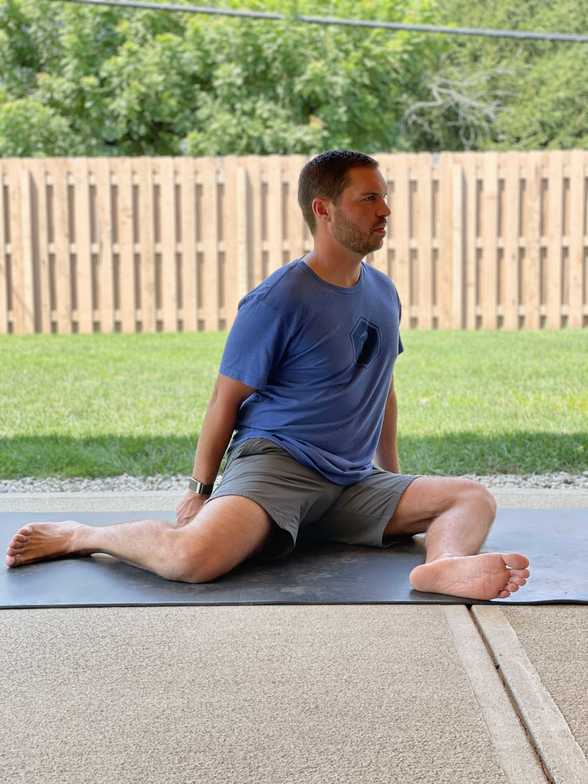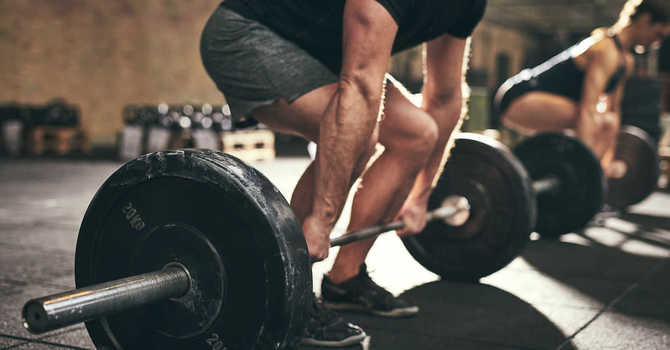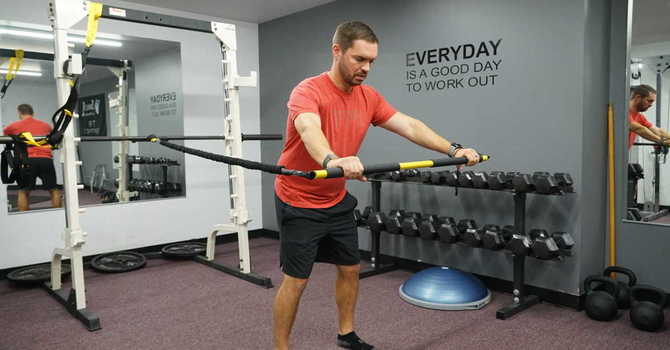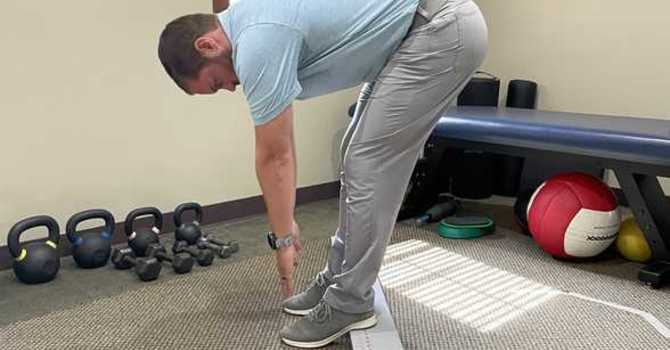
Hip injuries are one of the least common reasons golfers seek care, however, the hips are one of the most common dysfunctional areas in golfers. Lack of mobility in the hips can cause additional stress on the surrounding areas and lead to injury, especially in the lower back and knee. In a 2001 study of hip arthroscopy patients, 60% of those cases the hip was not recognized as the source of symptoms at the initial treatment. These cases were managed for an average of 7 months before the hip was even considered as a potential contributing source!
When we talk about hip mobility we are generally referring to internal and external rotation. The hip is a very mobile joint and can move in all planes but rotation is the most critical to the golf swing. If we are talking about a right handed golfer, the right leg (trail leg) goes into internal rotation in the back swing and external rotation after impact. The left leg is the opposite. If the hips cannot get into good positions you will either compensate with excessive movement somewhere else (ie lumbar spine rotation) or we will see swing faults (ie sway or slide).
Lack of internal rotation in the hips is probably the box I check on more assessments than anything else. So its pretty safe to say that most of you reading this could benefit from hip mobility. There can be structural changes to the hip that can limit your ability to reach end range mobility so we always perform a quick test before prescribing specific exercises. But let’s assume for this article that you do not have any structural limitations.
One of my favorite hip mobility exercises is the Hip 90/90 (Shin Box). The reason this exercise is so great is because it can be made challenging for all individuals with different variations. This exercise can also be modified to focus more on internal or external rotation, or it can be more of a joint mobility or a soft tissue stretch. Start by sitting flat on the ground with thigh straight in front of you with knee bent at 90 degrees and the other thigh out to your side with the knee bent to 90 degrees. Flip to the other side so legs are in the opposite position. Sit up as tall as you can each rep. Repeat back and forth to work on general mobility. You can do this in a supported position with you hands on the ground or you can make it more challenging by taking your hands off the ground. You can also hold each position to work stretching the different muscles around your hip.
One of the most important factors in reducing hip injuries or to not develop compensations is to not get into forced end range position. Many players are instructed to square their feet at address, therefore, increasing the likelihood that you will end up hitting end range of motion. If you have limitations you will hit that end range too soon and cause compensations or injury. Flaring the feet will externally rotate the hips and give you the ability to load easier on the backswing and not hit forced end range on the downswing. Yes, it is OK to flare the feet out a little! The only problem with foot flare is it can change your alignment, so be sure to align to the target first before adjusting your foot flare.
Another important factor may be stance width at address. Many players have a stance that is too wide and this can limit your hip range of motion. If your stance gets too narrow, this may increase your chance of swaying or sliding which can also lead to hip injury. So be sure to find a stance width that allows you to stabilize but still rotate as much as possible.





